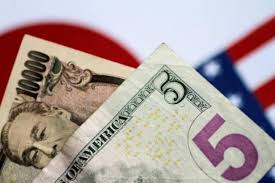The dollar gained momentum on Wednesday, bouncing back from recent lows driven by expectations of Federal Reserve rate cuts, while the Japanese yen continued its decline, prompting official warnings from Tokyo about potential market interventions. This movement in currency markets highlights a tense dynamic as central banks globally adjust their policies in response to shifting economic signals.
In Japan, the yen's weakness has become a significant concern for economic officials, with the currency falling for a third consecutive day. The decline brought the yen to a near 34-year low against the dollar, reaching levels that previously prompted the Japanese government to spend around $60 billion in market interventions. Despite these efforts, the yen's rebound was short-lived, suggesting that further actions might be limited in their long-term effectiveness due to the substantial interest rate differential between Japan and the U.S.
The dollar's recovery was marked by a 0.5% rise against the yen, reaching 155.47, distancing itself from the lows of 151.86 observed last week due to suspected Japanese intervention. This movement underscores the broader market focus on interest rate policies and their implications for currency values.
In Europe, central banks are moving towards easing measures, with Sweden's Riksbank announcing a rate cut and signaling more reductions later this year. This trend is mirrored by other European central banks, including the Swiss National Bank and potentially the European Central Bank, which has hinted at a possible cut in June. These developments exert additional pressure on the euro and contribute to the dollar's strength as investors seek higher returns.
The Bank of England is also on the cusp of policy adjustments, with market participants closely watching for any signs of a rate cut in their upcoming meeting. These global monetary policy shifts are creating a complex tapestry of currency pressures, with the dollar benefiting from its comparatively higher interest rates and economic outlook.
Meanwhile, in the cryptocurrency market, bitcoin and ether are experiencing a downturn, with bitcoin setting a record for its longest stretch of daily losses this year. This adds another layer of complexity to the financial landscape, as digital currencies react to broader economic trends and shifts in investor sentiment.
Looking ahead, currency markets remain attuned to the actions of major central banks, especially the Federal Reserve. With weaker-than-expected job creation data in the U.S., expectations are growing that the Fed might cut rates by the end of the year, an adjustment that could realign currency strengths globally.






